Senior Lecturer Barbara Edelman: Introduction
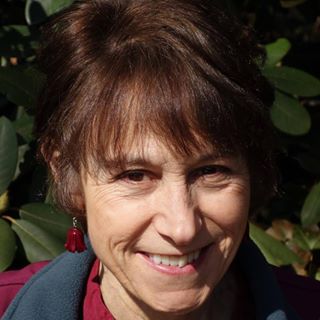
During the spring of 2020, I got the chance to teach two courses for the Pitt in Sydney study abroad program, in conjunction with CAPA Sydney: Travel Writing and Writing for Environmental Advocacy. I admired how the environmental writing students took advantage of our location to pursue relevant final projects such as promoting the use of green space to mitigate urban heat islands, advocating for responsible use of social media in the face of climate crises, and encouraging the study and adoption of Aboriginal fire management practices—a current topic of debate in Australia.
I also had a great time reading the work of the travel writing students, six of whose short essays are presented here. All of the writers embraced living in New South Wales, and their enthusiasm bounced off the page. Having injured my knee the second week in Australia, I got to live vicariously through their adventures—to read about activities I can plan for my next trip, or in the case of surfing, my next life. Our semester began with raging bushfires and ended, abruptly, with crossing the globe in fully-packed planes in the midst of a pandemic. But the students stayed remarkably buoyant (sometimes literally, as you’ll read). Even when we reconvened via little Zoom boxes, with most of them confined to their bedrooms, they continued to work: they read, they wrote, and they gave each other supportive feedback.
The essays collected here represent the various ways these travel writers explored place, culture, history, and people, and the ways they explored themselves and their backgrounds in relation to their encounters with the unfamiliar. In “No Worries,” Shaylee Burke paints a portrait of Jack, a guide for the Twelve Apostles tour along Victoria’s coast who, despite the wonder of the landscape, becomes the main feature of the tour. Emma Estabrook’s collage essay, “The Unexpected Adventure of a Lifetime,” digs into the intensity of her last days in, and departure from, Australia. In “The False Paradise of Neutral Bay,” Jillian Ramirez reflects on the appeal of the Sydney suburb where she interned and on the not-so-neutral history beneath the bay’s idyllic calm. John Fitch’s braided essay, “Is it Worth the Hike?”, juxtaposes a challenging spring break hike in Bali with a past adventure in Alaska. In “For the Love of the Game,” Kent VanderWoude explores his connection to baseball and the internship in Sydney that allowed him to regain his passion for the game. And Charlotte Carver’s “Flying at Dusk" centers on her encounter with Australia’s flying foxes: bats with a wingspan of up to a meter, and the only mammals capable of sustained flight.
Shaylee Burke: No Worries
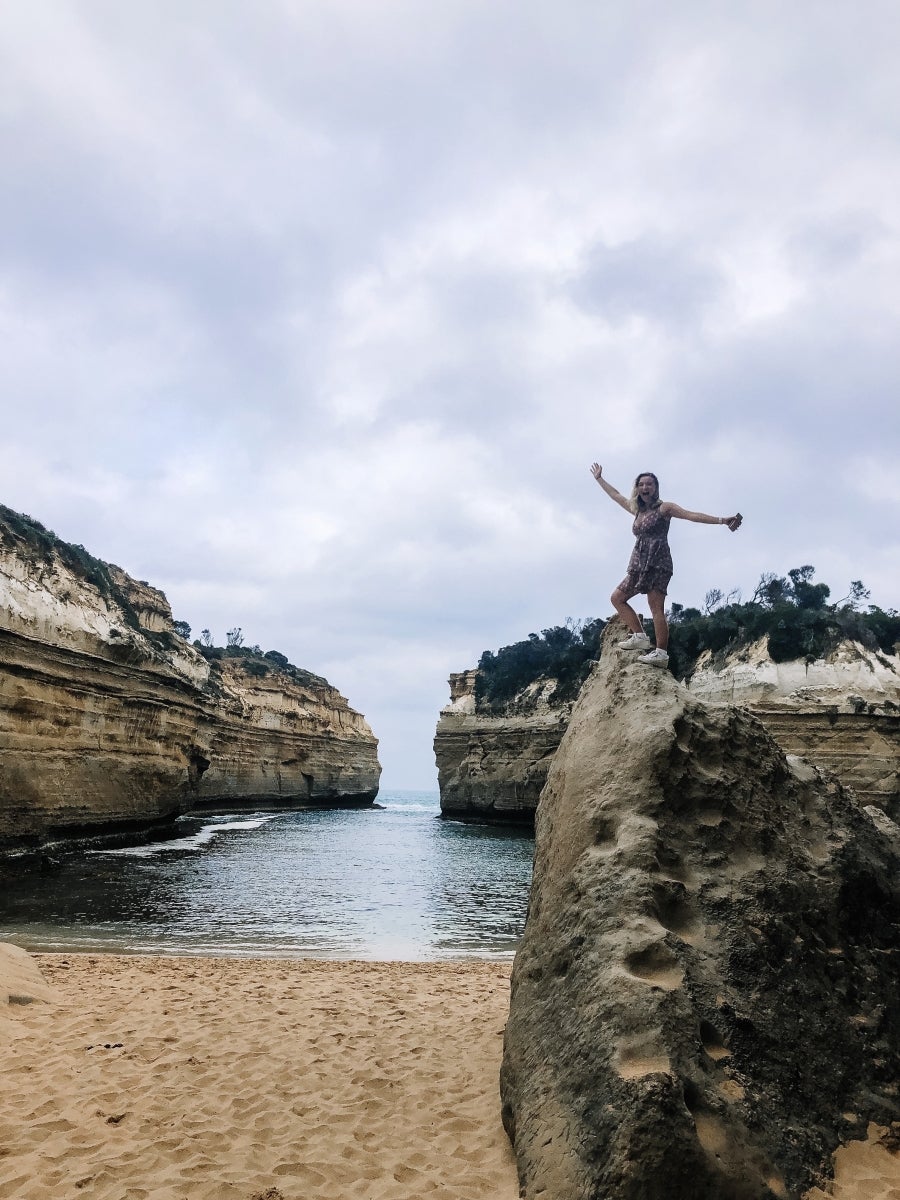
I couldn’t believe anyone could have such a beaming smile and lively spirit at 6:55 in the morning, but the man who stood before me proved me wrong.
“Good morning, Shaylee and friends! Here for Jack’s tour are you? No worries, right this way!” Jack, our tour guide and driver, proceeded to point out which seats my group of four friends could occupy in the small van. Considering my annoyance at the earliness of the excursion and lack of sleep due to a horrid hostel experience, my day wasn’t off to a great start. We opted for the back row, and I fully intended to gain three essential hours of shut-eye while we silently drove the reverse tour of the Great Ocean Road’s famous Twelve Apostles.
Jack had other plans. The moment we got comfortable in our seats, he launched into an introduction of himself and all visible surroundings in Melbourne, such as the history of St. Paul’s Cathedral and the Melbourne Aquarium. Frantically, he pointed out buildings before we passed them. He was bursting at the seams with knowledge and passion, as if he couldn’t get the words out fast enough. This definitely woke me up, and I became intrigued. His voice boomed throughout the small van, explaining how around 3,000 soldiers had returned from World War I then hopped right into action to construct the Great Ocean Road to honor fallen war companions —at first with just shovels and picks (Burin). He threw his hands off the steering wheel and into the air, describing how dangerous this task was considering the terrain, but how determined the builders were to create this amazing spectacle. Listening to his narration, it was hard to be anything but excited.
When we arrived at the Twelve Apostles, Jack stopped the van and presented the site. He quietly unfolded the history; almost in a whisper, he communicated how the limestone cliffs had eroded due to violent storms and harsh weather over twenty million years. Through hand motions, he relayed the crumbling and breaking down of the arches over time, and he described the remaining isolated stacks that skyrocket forty-five meters high (“History of the 12 Apostles”). He admitted there were actually 30 limestone masses in total, despite the name. Finally, he let us loose to photograph and explore on our own. About halfway through our allotted time at this stop, I caught him standing alone, gazing out from a viewpoint, hands behind his back, with a goofy smile plastered on his face. It occurred to me that ,as a full-time tour guide, he must see this same sight at least five times a week, but it appeared as if he were soaking it all in for the first time.
At our last and final stop (a bonus stop, in fact), Jack dropped our group off at the Great Ocean Road Chocolaterie & Ice Creamery. As I was ordering my dark chocolate sorbet, I heard Jack shout to the employee, “Aye, Noah, how ya goin? Mate, give this one an extra big scoop,” motioning to my order and winking at Noah. Of course, Jack was friends with all the employees.
I simply thanked Jack, and this interaction was enough to prompt him to reveal his whole story: Apparently, he was an accountant for 25 years, but this work wasn’t satisfying for him. It didn’t align with his outgoing, adventurous, light-hearted personality. Jack wanted no part of a life trapped in an office dealing with numbers each day. He owned this story, proud of every aspect, eyes widening at the part where he finally escaped his personal prison: the fluorescent-lighted 9-to-5 office setting.
Taking in his tale, I considered how dramatically his trajectory contrasted with how the American dream is supposed to play out. In the States, the agreed-upon objective is upward mobility and obtaining the house with the picket fence; hard work and sacrifice are the ultimate ideals because they yield promotions, which yield more money and power. American citizens value impressive results and profiting quickly. But Jack seemed totally at peace with taking his pay downgrade. He did not need a college degree for this tour guide gig.
This outlook befuddled me. "Now that’s a ridiculous financial decision," I thought. "How does he support his family?" I started to imagine myself ditching my own college education three years in and switching it out with a life spent traveling. But I couldn’t even finish the thought. It was hard to comprehend this choice of his without passing judgment. How could he be so okay with this lifestyle? Didn’t he prefer a steady salary, not a job that relies on five-star ratings on Yelp and tips from happy customers?
That’s when I registered why Jack had struck me as familiar: his carefree outlook on life and his trust that everything would work itself out in the end was common in many of the Australians I had encountered. I realized I can’t go an hour without hearing the phrase “no worries,” and this little saying encapsulated the attitude of the average Australian. And for someone like me who is typically stressed and pessimistic, a little bit more of this happy-go-lucky frame of mind can go a long way ... but it’s very hard for me to adopt. I have never gotten a B in college. I can’t even remember receiving a B in high school. Am I jealous of Jack?
I had believed so firmly in the path of working hard throughout school with the promise of a "good job" waiting for me upon graduation that I failed to stop and wonder what an alternative might look like. I hadn’t questioned whether the major expense was worth it, whether it would be the best decision for my personal fulfillment. I am jealous of anyone who can just "wing it" and trust that the pieces of a good life will fall into place, because I so rigidly adhere to a narrative where good grades will yield a good degree, which will yield a good job, which will yield good pay, which will yield happiness. But seeing Jack so happy disturbed this belief, and left me feeling both unsettled and inspired.
Upon exit from the tour, I emptied my purse of what was left of my Australian cash to give as a tip, and I promised to write Jack a delighted review on Tripadvisor for all he had taught us. I don’t know, finally, how I’ll incorporate Jack’s lesson, but I know it has stuck with me. I even caught myself saying “no worries” on the phone to my parents later that night.
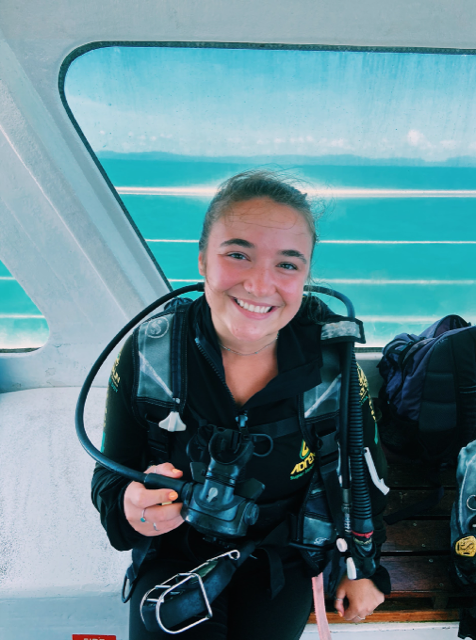
Shaylee Burke
Shaylee Burke is a rising senior majoring in Communication and Psychology with a certificate in Corporate/Community Relations. Her favorite quarantine activities include listening to true crime podcasts, going on lengthy walks around the neighborhood, and reflecting on her time spent abroad in Australia.
Emma Estabrook: The Unexpected Adventure of a Lifetime
On Wednesdays, our entire apartment was cleaned for us. Our linens were changed and our used products replaced by what seemed like magic. I woke up every day with a view of downtown Sydney from my penthouse bedroom window. Each day greeted me with 80-degree weather and sunshine that seeped deep into my skin. Everyone around me seemed to exude happiness. I have always appreciated learning more about myself while exploring new places. I finally had a platform to do this for five months, studying abroad in Sydney, Australia. Going to the beach. New parts of the city. Trying new foods. Meeting new people. Anything and everything I had ever wanted.
***
Fifteen hours with my body practically glued against the wall of my window seat, trying to avoid physical contact with my seat mate. Will I be able keep this up? I tightly grip the hand sanitizer and wet wipes, my defense for the risky return to the United States. The viral outbreak of COVID-19 has ended my trip of a lifetime. In late December of 2019, even before I had left for my trip to Australia, the coronavirus emerged from Wuhan, China, and resulted in a formidable outbreak quickly spreading globally. Fever. Dry cough. Fatigue. No treatment or vaccine. What seemed like a problem distant from the continent I was on quickly spiraled out of control. With over 1,500,000 cases worldwide it was declared a pandemic in February of 2020. The last time something like this had ever happened was the 1918 influenza pandemic. However, the mortality rate for COVID-19 is 3–6%, while for the flu it is only 0.1%. When will I ever get to live so carefree on another continent with all of my best friends again?
***
I had been dreaming about studying abroad in Australia for as long as I can remember, long before college even started. I had this big plan of studying in the spring and then staying after my program ended to explore the place I have wanted to go my entire life, New Zealand.
Skydiving in Tuapo. Whitewater rafting the Kaituna River. Snorkeling at Hot Water Beach. Backpacking in Fiordland. Finally, it was time for my dream to become a reality. I had a booked a campervan for 21 days as my home during my time exploring both islands. In New Zealand, they have something called “freedom camping.” Freedom camping means you are allowed to park your campervan in designated areas all around New Zealand and sleep there for free. I have always wanted to try out the independence that comes with van life. This was the perfect country for me to get a taste of that liberty.
***
Before I left the States, Australia was experiencing the worst wildfires it had ever had, with at least fifteen people killed, hundreds of homes destroyed, and millions of acres burned. Military ships and aircraft were deployed to help deliver food and fuel to towns cut off by the fires. Climate change created the perfect storm of conditions: record-breaking temperatures, extended drought, and strong winds. A heat wave in December caused the average temperature to reach 107 degrees Fahrenheit. The air quality was terrible, and over half a billion animals’ lives were lost to the flames. Every news headline showed people fleeing the country I was about to move to. My mom sent me with a 15-pack of PFC masks to protect me from the pollutants caused by the fires. Little did I know that those masks, which came to be in such limited supply worldwide, would be needed to protect me on my unexpected flight home due to the novel coronavirus.
***
“The University of Pittsburgh has decided to send all study abroad programs home to the United States immediately.” The email lights up on my phone before my blurry eyes. My heart drops to the pit of my stomach. It is 6:00 a.m. Everyone here is asleep. The only lights in the sky are from buildings. Am I the first person to know that our program is over? My mind flashes to everything I’ve planned for the next two months abroad. Great Barrier Reef. Tasmania. Thailand. Vietnam. New Zealand.
“No, it’s not.” My roommate is in denial. So am I. My friends and I gather together earlier than we have ever seen each other before. Emotions are swirling about the room: shock, devastation, denial, stress, utter sadness. I see my friend cry for the first time, on the phone with her mom. Each one of our phones overlaps with the same on-hold music while we all try to book our flights home one month earlier than planned.
***
My whole body feels static. I am shut off to the world by myself on a plane heading back to New Hampshire. Movie or TV show? Or should I just go back to sleep? The smell of airplane eggs wafts into my nose, making my stomach churn. These eggs are over ten hours old. I eat them anyway. The atmosphere on the plane is different. Fear is heavy in the air. One person lets out a sneeze that would have once seemed harmless, but now, everyone stares ... are they infected? This feels apocalyptic. I have never been so hyperaware of how many surfaces I touch or how often I have the urge to touch my face. I just want to be home safe. I tally up how much money I’ve lost in flights that I will never use. The experiences I am going to miss hurt more than the hundreds of dollars lost.
I was excited to test my independence travelling to Thailand, Vietnam, and New Zealand on my own. Each moment I had free while in Australia I would spend planning and budgeting for these trips. It felt like I was finally getting a chance to experience the “real world” by creating my own travel agenda and funding it all on my own. Being so close to graduation, I felt like I had something to prove. I wanted to show myself that I could problem-solve and learn the practical skills that come with solo travel. Now, I am flying away from all of those adventures planned. Out of the warmth and excitement to the cold and familiar.
***
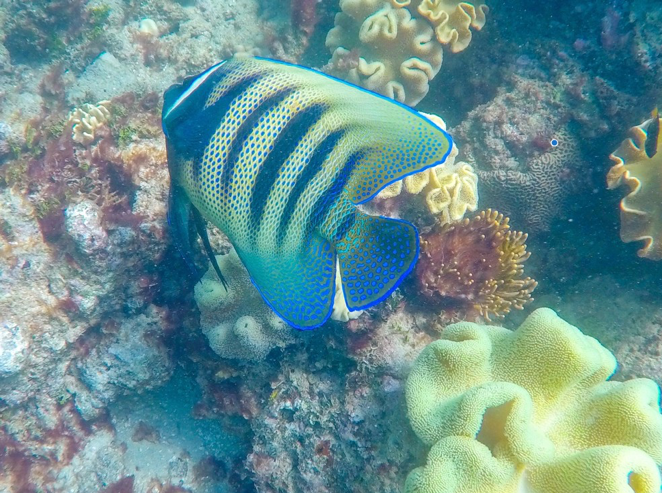
Undersea life: Great Barrier Reef
The feeling of breathing underwater speeds up my heart rate. The air from my tank forces oxygen down my throat. Don’t freak out. Focus on your breathing. I am scuba diving for the first time at the Great Barrier Reef. The silence relaxes me. I’m surrounded by so many people, yet none of us are able to communicate with each other. I have always enjoyed experiencing things on my own. My goggles are leaking, the waterline just below my nose causing my heart rate to speed up. Is this supposed to be happening? The instructor signals “OK” at me. I am not okay. My mind flashes back to what our instructor told us before the dive: “If one of you has a problem and has to go to the surface, the dive will be over for everyone.” I can’t be that person who ruins this once-in-a-lifetime experience for my friends. I flash the “OK” signal back to her as my eyes start to sting from the saltwater. Stay calm. Press on your forehead, look up, and blow. This is the technique we learned just a few minutes ago on how to propel water out of our mask. I perform the sequence, and to my surprise, it works perfectly! My face beams with a smile stifled by my mouthpiece. In the past, in moments like this, anxiety has engulfed me like a blanket, making it impossible for me to do anything but escape the feeling by all means necessary. I have struggled with anxiety my whole life and just within this past year have managed to get it under control through many doctors’ visits and other methods. I feel proud. My eyes shift to a small reef shark gliding through the water below me, unfazed by my presence. I feel calm, 40 feet underwater with a shark ten feet away from me. This is awesome.
***
The frigid air hits my face like a concrete wall. My toes, still exposed from my sandals, turn a light shade of blue. Ahh. Home. It is officially over. “It’s only been eight weeks, so I don’t have to hug you right?” My mother’s face is turned away from me in aversion. What a nice welcome home! I know she is joking, but the comment and her refusal to stand within arm’s reach of me makes me feel so alone. Not only was I sent home from where I was the most happy I have been in my entire life, but now that I am home it feels like my family doesn’t want me here due to my possibly having contracted the virus.
***
I am grateful that, when I heard my program was being cancelled, my friends and I decided to move our trip to the Great Barrier Reef to the next day. The spontaneity and carefreeness we got to experience in the last few days in Australia were exhilarating. I never had a solid friend group in high school. I usually tended to float between groups and stick to just a few close friends. I finally felt like this was a group of people that I could be myself with and could feel like I belonged with. All we cared about was living in the moment and having the most possible fun we could before being shipped home. We would throw our heads back and laugh as we ordered expensive cocktails at a restaurant overlooking the Opera House.
In a few hours, I’ll be locked in my room like a criminal, left only with unknowns. My back aches from the pain of carrying my 65-liter pack filled with all of my camping and rock-climbing gear that I never got to use. I had dedicated an entire bag to things I would only use in New Zealand, and now it’s just dead weight on my back.
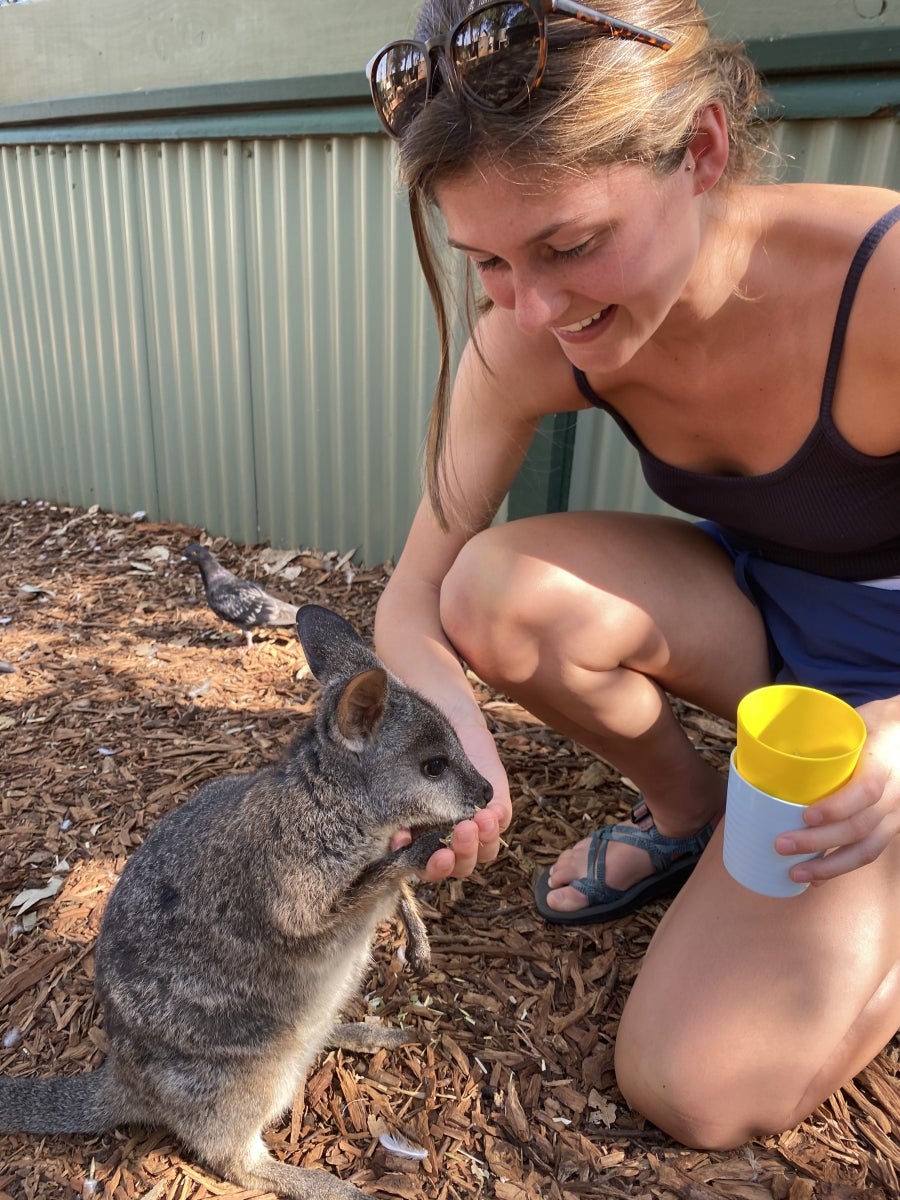
Estabrook with wallaby
Emma Estabrook (she/hers) is a junior at the University of Pittsburgh, majoring in Finance and Business Information Systems. She is originally from Amherst, New Hampshire where she enjoys hiking, rock climbing, and kayaking in the nearby White Mountains. During her spring 2020 study abroad semester in Sydney, Australia, Emma was a product development intern with the company MyInterview.
Jillian Ramirez: The False Paradise of Neutral Bay
At first, I dreaded my internship’s 45-minute commute to a suburb outside of Sydney. It was so far and so not in the central hub of the city where it seemed like most young, eager workers ought to be. But I grew to love the small town I would not have seen otherwise. Neutral Bay.
There’s the main street, Military Road, lined with shops and restaurants, busy with traffic in the morning. The same one waiter runs about the outdoor seating of a popular coffee shop, balancing a cup of coffee on a small dish in each hand as he navigates the scattered tables and chairs to deliver the steaming brew to a grateful patron. Children in their uniform safari hats hold their parents’ hands as they trot along the sidewalk to school. As I pass the houses, each is more beautiful than the next, with orange shingle roofs and balconies littered with plants. According to Sydney Architecture by Graham Jahn, by the beginning of the twentieth century, Neutral Bay was developing as an “alternative society suburb,” populated by bourgeois people who were attracted to the Arts and Crafts architectural style in vogue at the time. This style gave homes a “human touch,” which I can totally see, as each house is a little different from the next. Sometimes, I try to guess which one my boss lives in. I imagine her perfect life in this town: walking to work every day, leaving for lunch to run errands at shops where they know her by name, wrapping her kids in a warm hug when they stop by the office on their way home from school. At the bottom of the steep hill lies the famous bay. The water is so blue and the sun so bright, and ships move about the water as if running on a designated track. Life is good in Neutral Bay.
But in researching the history of this charming town, I realized that its past is not as serene as its present.

Australia, Water
Neutral Bay was given its name by Governor Arthur Phillip when he came to the bay in 1789 and declared it a neutral harbor where foreign ships (non-British, "neutral," ships) could dock; hence the name "neutral" (Masson and Hoskins). But the Aboriginal name for the area was Wirra-birra, meaning "place of trees near water." A much more beautiful name, in my opinion.
I didn’t think I would be deeply affected by learning of the tragedies that have befallen the Aboriginal people of Australia, as I have not, I admit, been deeply affected by the similarly tragic history of Native Americans in my own country. But the reality is that learning about an entirely different group of people losing their land, language, and way of life, and never getting it back has stirred up entirely new feelings.
My strong feelings may be due in part to the novel I’m reading in my literature class. Follow the Rabbit-Proof Fence (by Doris Pilkington Garimara) details the lives of three girls, each of them half-white and half-Aborigine, who have been taken from their Aboriginal families and raised elsewhere. In fact, in Neutral Bay, some of the private homes along the waterfront were serviced by maids, and one of these maids was the famous Aboriginal writer and activist Margaret Tucker. As a young girl, she was taken from her family to be trained at Cootamundra Domestic Training Home for Aboriginal Girls. She wrote of her experience working in the Neutral Bay home of a grazier's family in the 1920s (Masson and Hoskins).
It hurts that my favorite place here is just another part of this dark history. I’ve grown to love a town that maybe shouldn’t be any of the things it is. The ideal life I see here wouldn’t exist if not for the injustices done to the Aboriginal people. This was meant to be someone else’s beautiful bay. I find that coming to a new place, one with an unfamiliar history, has prompted me to consider a place and its origin in conjunction with each other as I have never done at home. But I’m also not sure if I will ever care about history in the same way at home.
Will I now question the name of my hometown? Will I find that it was once something more poetic and real than the clearly Anglo-Saxon Middlesex? It’s as if seeing a place for the first time has allowed me to look at both its past and its present, which has in turn encouraged me to examine the complications surrounding the naming of my own hometown.
The history of Neutral Bay has not ruined it for me, so maybe looking more deeply at a place doesn’t mean having to lose it. Maybe doing so will deepen my connection to the people of my own country who have lost their land, language, and way of life.
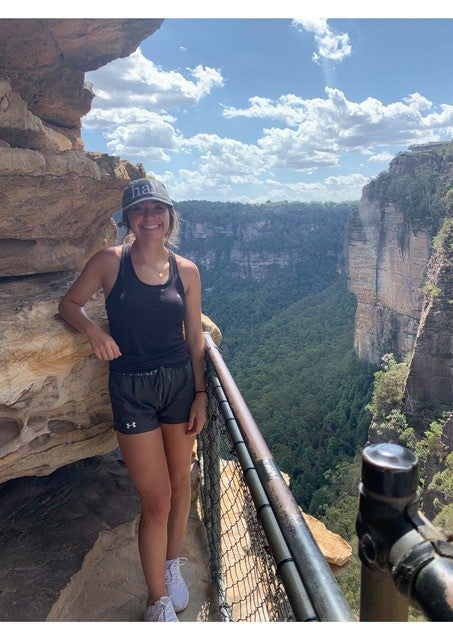
Jillian Ramirez
Jillian Ramirez is going into her senior year at the University of Pittsburgh with majors in English Writing and English Literature, and a minor in Gender, Sexuality, and Women’s Studies. She recently returned from a study abroad program in Sydney, Australia, where she interned as an editorial assistant for Publishing ByChelle. She hopes to continue working in publishing and editing after graduation.
John Fitch: Is It Worth the Hike?
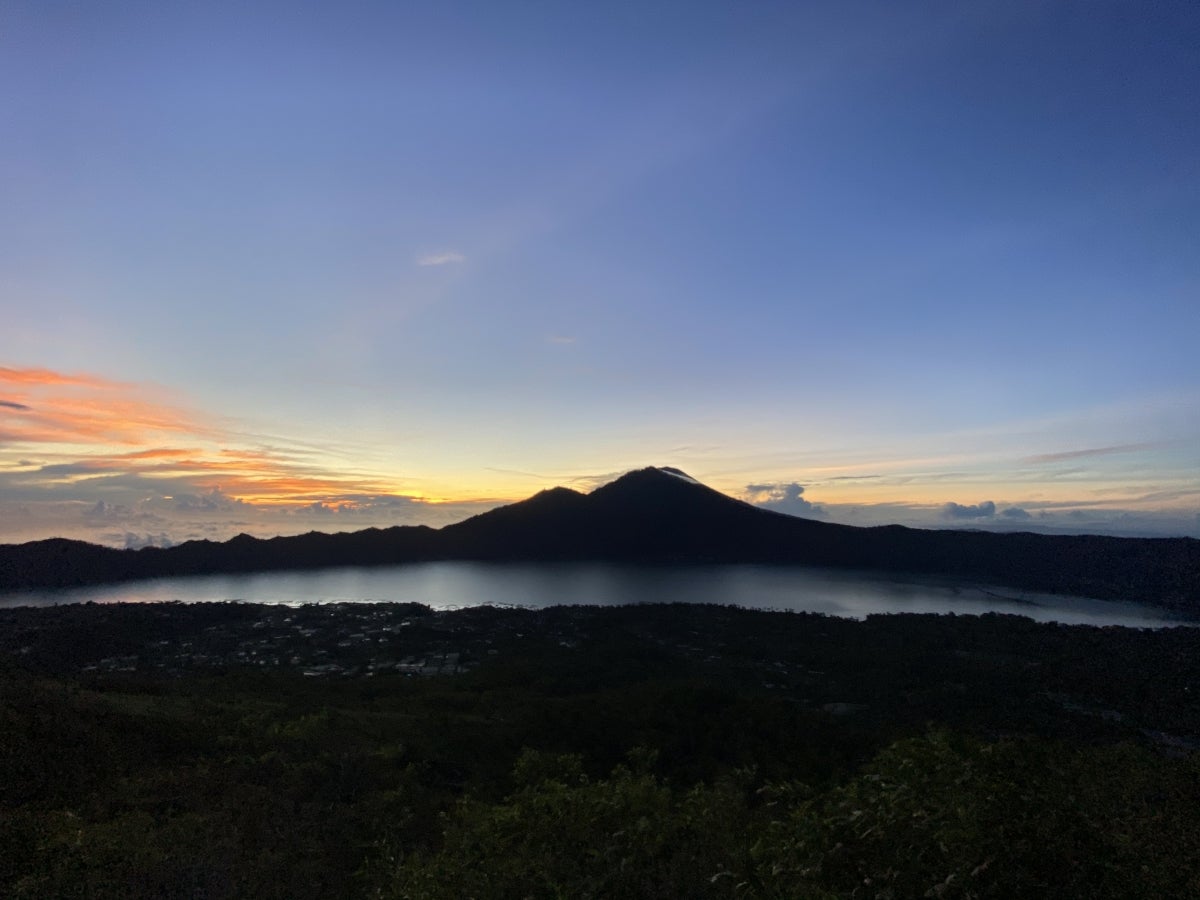
View from Mt. Batur
“Wait ... all the way up there?” I squinted and glanced up. The blurry light began to take shape, and I made out a line of flashlights outlining the hiking trail. The trail of lights wove side to side like a snake. This illuminated path led to the top of Mount Batur, 5,633 feet above sea level. My tour guide cheered us on with more energy than anyone should have at 4 a.m. From the front of our seven-person group, I heard, “Come on, tigers, let’s go, only 30 more minutes until the top!” While I suspected the encouragement was exaggerated and we weren't even halfway there yet, I had no choice but to accept what she was saying, as I could not make out the peak in the vast darkness.
“No John, it still goes up past those clouds,” my dad muttered in between two deep breaths. As I stopped to catch my breath, I realized we had made it to the halfway point ... not the peak. After two strenuous hours hiking up the Glen Alps, I figured we had reached the top. My sister and I had gotten so caught up in telling corny jokes that we forgot how hard we were working and didn’t notice our surroundings. My dad led the way. The heavy fog bunched at the peak of the mountain like a wig, obstructing the point. As a family similar to ours shuffled by us, I overheard their enthusiastic tour guide exclaim, “Let’s go, only 20 minutes to the top!”
With each step I took in the dark, I contemplated whether this view would be worth the struggle. I had fallen ill the night before with food poisoning, only getting 30 minutes of sleep. My stomach was weak and rumbling due to a lack of breakfast. I was groggy, shivering and dehydrated. As we wandered into the darkness, I struck up a conversation with a European in my group, learning about how Bali was only one stop on her three-month trip. The conversation began partially because of genuine interest, but mainly to keep me distracted from the miserable situation. Every so often I took a knee to gather myself mentally, rehydrate, and settle my stomach. I kept hoping that this view would be worth the misery I was putting my body through.
“Right here is far enough John; it’s not worth going all the way up there.” My dad tried to keep his voice calm.
“It’ll be super quick, I swear,” I assured him, acting as if I had done the hike before.
My dad exhaled and said slowly, “Just please be careful; we’ll wait here.” I could feel my father’s eyes locked in on my every movement as I began my climb. My Nike running shoes and bare hands didn’t prove as effective as the hiking boots and walking sticks that passed me. With every crunch and rumble of pebbles under my feet, I half expected to hear from below, “Ok, John, that’s enough, come on down now.” To my surprise, there was silence as I disappeared into the fog. I thought about the concern in my dad’s voice, the hesitation he expressed when allowing me to continue. This thought built up the more I climbed. I began to wonder if going further was worth my father’s worry. Was my father apprehensive for good reason? I didn’t know why I was so determined at that moment, but I persevered.
I took my final steps, reaching the grassy plateau just as the sun broke free from the horizon. Suddenly, my mood lifted with the sun as I began to warm up and light flooded the horizon. The sun illuminated a panoramic view of the glass lake, reflecting blue skies. A view that couldn’t be replicated by a photo. I felt the negativity and doubts disappear as I embraced my surroundings. The sun brought life to the mountain. Monkeys emerged from the dark crevasse, hikers engaged in lively conversations, and a smile grew across my face.
Through difficult maneuvers, twists, and turns, my legs hardly supported my spider-like positioning. I gained my footing and reached the peak. As I panned my eyes across the view, I was met with a thick haze. I very literally had my head in the clouds, which evoked a surreal feeling. I ventured over to an American flag, rooted in the rocks like a tree. I grasped the chilled steel pole for support, and I looked over the steep maze I’d ascended from. I was flooded with a rush of accomplishment and satisfaction that washed away all my nerves and doubts. There was no doubt in my mind, the exhilaration was worth the climb.
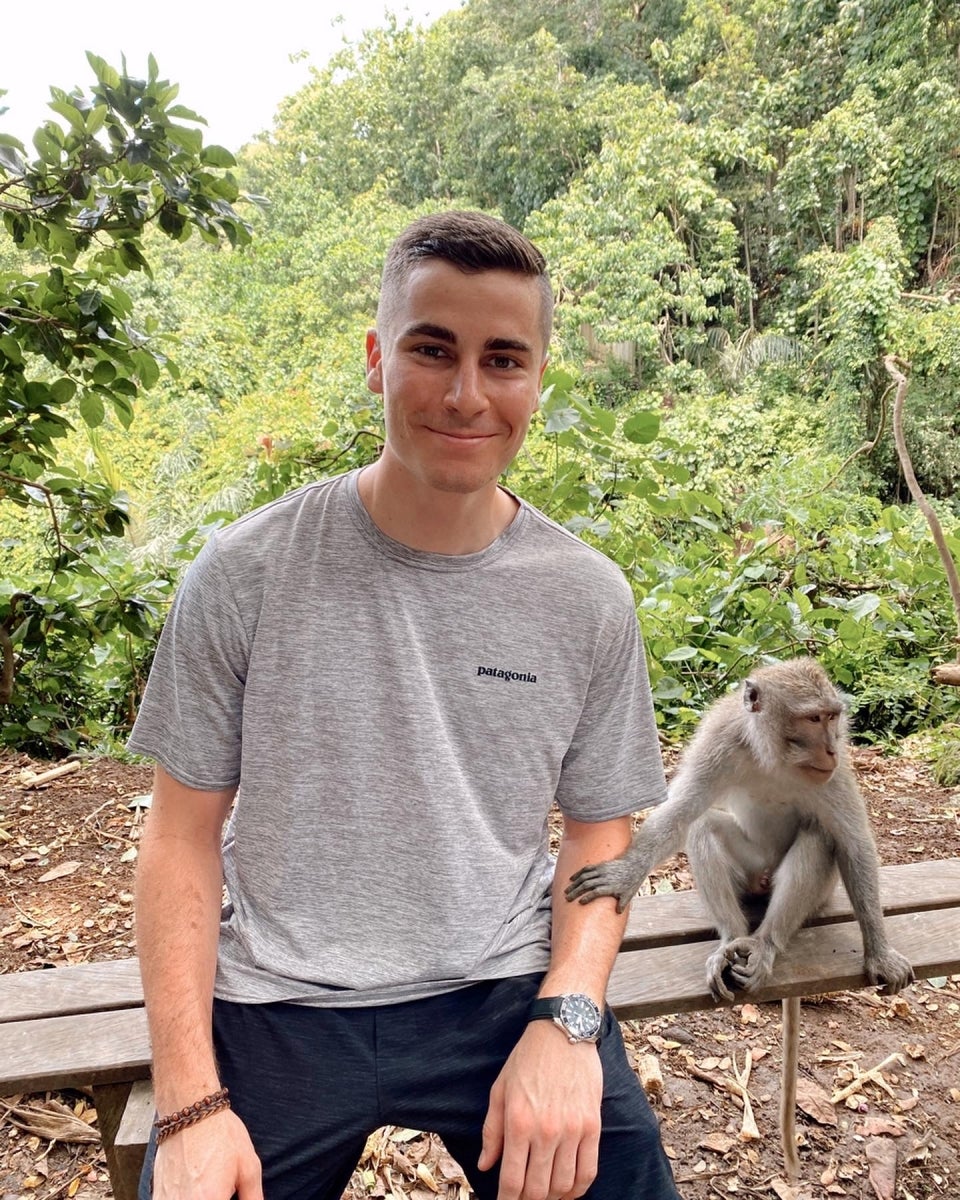
John Fitch and a monkey
John Fitch is a rising Pitt senior from Buffalo, New York, who is studying Supply Chain Management and Marketing. During the spring semester in Sydney, he took three classes and worked at a full-time internship in downtown Sydney, where he was a business analyst, conducting market research and dealing with data organization. He enjoyed traveling throughout Australia and to other countries, including a spring-break trip to Bali, Indonesia (the inspiration for this essay).
Kent VanderWoude: For the Love of the Game
“This one’s hit deep to left! Out to the warning track and ... off the wall!” The packed crowd at Blacktown International Sportspark Sydney gave their loudest cheer of the scorching hot evening as Randy Santiesteban slid into second base safely with a leadoff double. The Sydney Blue Sox baseball team was in the second inning of the first game of a four-game series against the heated rival the Canberra Cavalry, and an important one at that. Both teams were battling to keep their slim playoff hopes alive in the final round of the Australian Baseball League season. I made a swift departure from my post to catch a glimpse of my favorite childhood pastime in action on the other side of the world. Since the day I landed my internship with the Blue Sox, this was the moment I had been looking forward to the most, and it was just the beginning.
As a kid growing up in Baltimore, one thing that was always prominent in my household was Orioles baseball. Souvenirs and signed memorabilia of Orioles legends lined the walls of my childhood home. A large framed photograph of my parents at Cal Ripken Jr.’s famous “2131” game in 1995—when he broke Lou Gehrig’s seemingly unbeatable record of consecutive games played—was placed front and center on the wall for everyone to see. As dedicated season ticket holders, my parents would rotate my siblings and me into our seats for all nine innings of 81 home games. Vibrant, colorful sunsets over the magnificent warehouse beyond right field at Camden Yards became a repetitive visual memory. In the months of March–October, it was very rare to experience a night without either going to the ball game or experiencing it in our living room through the voices of the TV announcers or radio broadcasters. Baseball became so far ingrained in my life when I was young that I wanted a job working in baseball when I grew up.
During the few years before I left for college, my enthusiasm for baseball had wavered. My family had moved out of Baltimore city and into the suburbs. The season tickets got sold, and the memorabilia no longer stood out in our new house. Due to an injury in my throwing elbow, I could no longer play baseball competitively like I always had. Baseball was also losing popularity fast among people my age, as lacrosse was growing rapidly. I found myself much more interested in other sports, leaving baseball in the shadows. My career passion was no longer about baseball, or any sport for that matter. Becoming a businessman was my new aspiration, and a desk job after college seemed to be calling my name.
Two months before my 21st birthday, I decided to study abroad for an entire college semester in Sydney, Australia. Australia was a place I had always wanted to visit, even though I actually knew very little about it. Of course, the stereotypical images of kangaroos and koalas and fascinating accents came to mind. However, the beauty of Sydney and its surroundings, such as the Sydney Harbour, which I had seen in photographs and heard of from some friends, convinced me to pursue a visit sooner rather than later. When else would I have this opportunity again? As part of my study abroad program, I was offered the chance to apply for a part-time international internship for course credits. After submitting the general application, I waited for what felt like an eternity for a response.
One night weeks later, my smartphone lit up with an email that my eyes could not believe. It was a marketing and operations internship offer from the Sydney Blue Sox, a professional baseball team in Australia. With the little I knew about Australia, I certainly did not know about their professional baseball league. My mind started racing like an Olympic runner, flashing back to my childhood and then returning to the present, to news that was completely unexpected as I had not even mentioned baseball in my internship application. I was merely looking for a marketing position. How could this happen? Could it just be a coincidence? Mixed emotions coursed through me as my inner 10 year-old self attempted to jump out of my body to accept the offer, only to be suppressed by my best effort to think rationally. Was this a position I wanted to accept? My priorities had evolved, and I wanted to accept an offer that gave me the best experience. However, this offer was staring me in the face, and it felt like a mistake to turn it down. I was going back to baseball.
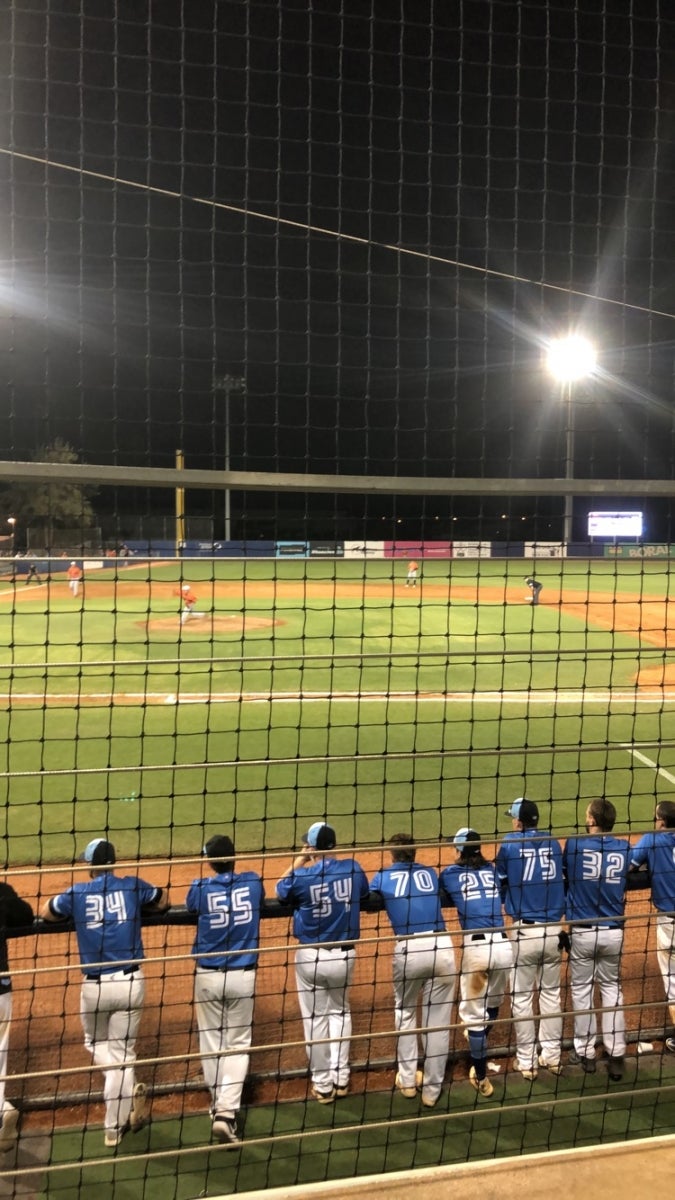
The Sydney Blue Sox
My long-anticipated first day on the job brought me to my new office in Rooty Hill, New South Wales, about an hour outside of Sydney’s central business district. I had done my research ahead of time on the Blue Sox and the Australian Baseball League. The ABL was originally formed in 1987 and disbanded in 1999. The Australian Baseball Federation and Major League Baseball worked together to recreate the league in 2009 in an attempt to increase the international popularity of the sport. Many of the players in the league have experience as professionals in the United States, in either the minor or major leagues. There are eight teams total in the league: seven from Australia and one from New Zealand, with players from countries all over the world. These teams play ten regular season “rounds” of four games on the weekends between the months of November and January. Each team plays 20 games at home and 20 games on the road as opposed to MLB’s 162-game season.
As a member of the Blue Sox staff, I found a home at Blacktown International Sportspark. I arrived the first day anxious to take a look around. The stadium was relatively small, with only 3,000 seats. For comparison, MLB stadiums hold between 30,000 and 56,000 seats. Blacktown was built solely to be the venue for baseball games in the 2000 Olympics when Sydney hosted, going largely unused until the Blue Sox claimed it as their home field. The effects of this disuse were evident, as the stadium looked in need of some updating, starting with the faded and worn-down seats. The field itself was kept in very good condition, with freshly cut green grass and clean infield dirt that was maintained daily. I was surprised to find that my office space was not actually located in the stadium, but across the roundabout. The office was very small and disheveled, with only a few desks, a handful of employees, and loads of clutter. My childhood dream job was starting off as a bit of a letdown. Maybe I should have waited for a different opportunity.
The next day, my supervisor, Jenny, asked me to take care of some things around the stadium to help prepare for the weekend’s home stand against Canberra. As I worked under the beating heat of the sun that was well over 100 degrees that day, one of the players arrived at the stadium. Quick to notice an unfamiliar face, he came over to introduce himself. “My name’s Jack, I’m the catcher. You must be Jenny’s new intern! Would you mind playing catch with me for a few minutes to loosen my arm up?” I hesitated as I was unsure about leaving my assigned task at a new job to throw around a baseball. “Jenny won’t mind, I promise.”
I hadn’t picked up a baseball or a glove in years, and I was about to play with a professional. For all I knew, he could be a former or future MLB player. As the soft leather glove touched my hand, memories of playing flooded my mind. A few throws in, I was confident and feeling like my old self. The natural feeling returned seamlessly. I took advantage of the opportunity to ask Jack some questions. He was from Florida, and it was his second season playing with the Blue Sox. “Why are you playing here in Australia?” I asked him.
He looked at me and paused. “I know there’s not much glory playing over here, especially for someone who had hopes of playing in the MLB. It doesn’t pay very well either. But I do it for the love of the game. That’s the important thing.” His attitude reminded me of my old self.
Five days later, the Blue Sox were playing their final game of the season. Canberra and Sydney had both been eliminated from playoff contention over the previous two days, but both teams still had something to play for. These two rivals are directly down Hume Highway from each other, so the overall season winner hoists the Hume Highway Cup each year. This season, it came down to the final game as the teams were evenly split in their previous matchups. As the marketing intern, it was my responsibility to help promote this event to motivate the fans and players, and I embraced it as I tried to regain the love of the game that Jack had. Despite the playoff elimination, the stadium still filled for the last game as fans from both sides eagerly wanted to see who would take the Hume Highway Cup. As I watched the fans, I couldn’t help but notice how much joy and pride they showed throughout the game. It was another reminder of how I’d felt as a fan at Camden Yards. My old passion had found me once again in the most unexpected of places, halfway around the world. I smiled softly at the ground, knowing I was where I was meant to be.
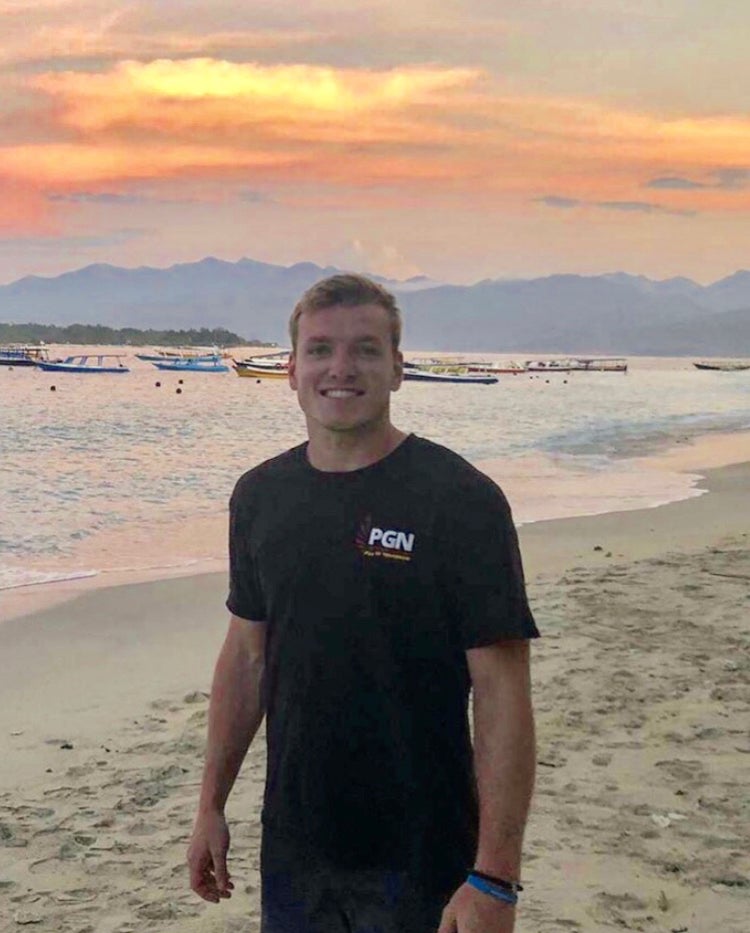
Kent VanderWoude
Kent VanderWoude is a junior business student from Westminster, Maryland, majoring in Marketing and Supply Chain Management. In addition to his majors, he is also pursuing a certificate in Sports Management, which fueled his desire to intern with the Sydney Blue Sox during his semester abroad in Sydney, Australia. Although his time in Sydney was cut short due to COVID-19, Kent is extremely grateful for the experiences he had there, and he hopes to return to Australia one day.
Charlotte Carver: Flying at Dusk
The sunlight retreated farther up the sidewalk, and a strange breeze dropped in. The cars whizzed by on the road beside us until the glowing green man in the casement invited us to step into the street with safety. In a momentary quiet I heard them. I could hear them screaming. I looked up at the blue sky and saw it speckled with dark silhouettes moving amongst the evening clouds. At first glance, I took them as birds. Then I noticed the sharp points and arches of their paper-thin wings. Bats. Huge ones. Tons of them.
Their sound was so familiar yet so foreign. It flashed my memory back to the Scooby-Doo program I would watch every day growing up: the signature drum roll and screeching bats that began each episode, the noise automatically directing my full attention to the television set. Now I stood on the sidewalk, my eyes glued not to a screen but straight above me. Their shape, too, was very recognizable, but in a way that made me forget they were real animals and not just a symbol of the Halloween season or the icon of a fictional superhero.
But they are in fact real and are right here in Sydney, Australia. My eyes widened and my mouth fell open in awe. I had never seen so many bats, or any, for that matter, before coming here.
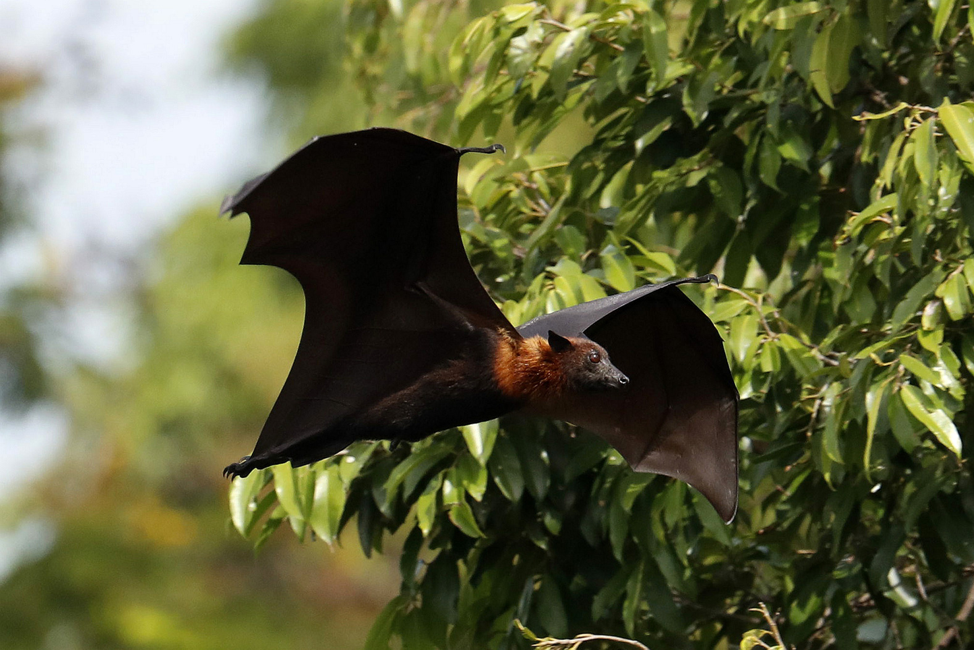
Flying fox
As a kid, I had a specific interest in these creatures. My mother would often take us to the public library; it had lots of toys and endless shelves of children’s books to entertain my brothers and me while she tapped away on her laptop. After amusing myself with the vintage playthings, I would venture off into the shelves to explore a more two-dimensional world. I would sprint through the shelves, hidden by the fortress of volumes, and halt to a walk when I was visible to outside observers. I would grab an armful of books and sit on the hard carpet and pour through the pages. Back against the shelves, I would place myself in these pictures, in these texts, attempting to see where I fit into the world—on a farm, deep in the ocean, in the sky perhaps—never feeling sure. Whether reading illustrated stories or factual science books, I always chose at least one about bats. Finally, so many years later, I was seeing these creatures off the bound pages and flying in the trees above me.
I slowed my walk and craned my neck around as my friends and I entered Centennial Park, located in the eastern suburbs of Sydney. These large bats flew from one tree to the next in a frenzy, grabbing hold of the branches and attacking the fruit and flowers quickly before moving to the next.
Unable to look at everything and walk effectively, I stopped in my tracks. I stared up and spun slowly to obtain the full 360 of the scene: bat bodies darting about, shrieking continuously. One swooped down low, making me flinch but enabling me to see its fuzzy body and impressive wingspan in detail.
After my initial awe, a thought struck me—it’s so light outside, what are these bats doing out? Many claim animals possess a sixth sense of some kind and, when they act out against their natural instincts, it is because they can feel something—something off. This apparent abnormality made my stomach drop slightly. The strange breeze wiped my hair about and whispered on my neck; my curiosity piqued, we continued into the park.
“Around sunset the flying foxes begin to come out to feed, even before full dusk” I read off the Centennial Parklands website, vaguely disappointed that I had not witnessed anything out of the ordinary. Flying foxes, I learned, is the more accurate title for the larger bats here in Australia. Centennial park is especially known for the large colony of flying foxes and other bat species that visit. Bats are the world’s only flying mammals, I read, and are nocturnal as they can see in the dark and thus have an advantage at night when other animals are asleep.
Long before the days of endless information access and advanced scientific knowledge, Aboriginal Australians would make sense of the world around them through dreamtime stories. The Yuin people of Wallaga Lake had a dreamtime story called “Bangu the Flying Fox” to explain why these creatures flew at night rather than in the day. Bangu is a confused flying fox who cannot figure out what she is since she has wings like a bird but fur like an animal. When these two groups fought, she typically aligned herself with whichever side was winning at the time. However, both the birds and land animals became very angry with her lack of loyalty and rejected Bangu. Thus, the young flying fox was left with no friends at all, forced to always travel at dusk to avoid both groups.
Although Bangu should have shown faithfulness over self-interest, her struggles were rooted in her lack of identity—a feeling many can relate to at some point in their lives. Aboriginals did sense a degree of immorality in bats—typically depicting them as wrongdoers and symbols of darkness and chaos—but they also saw them as isolated, lonely foreigners. I myself am still searching for where I belong, what I want to do, and who I want to be. Back between the shelves of the library I began my exploration, and over ten years later, I look on. My journey to Australia is a continuation of this pursuit. I think that is a big part of what traveling is all about—within the new places and cultures, we are simply searching further for clues to who we are. Until then, we fly at dusk.
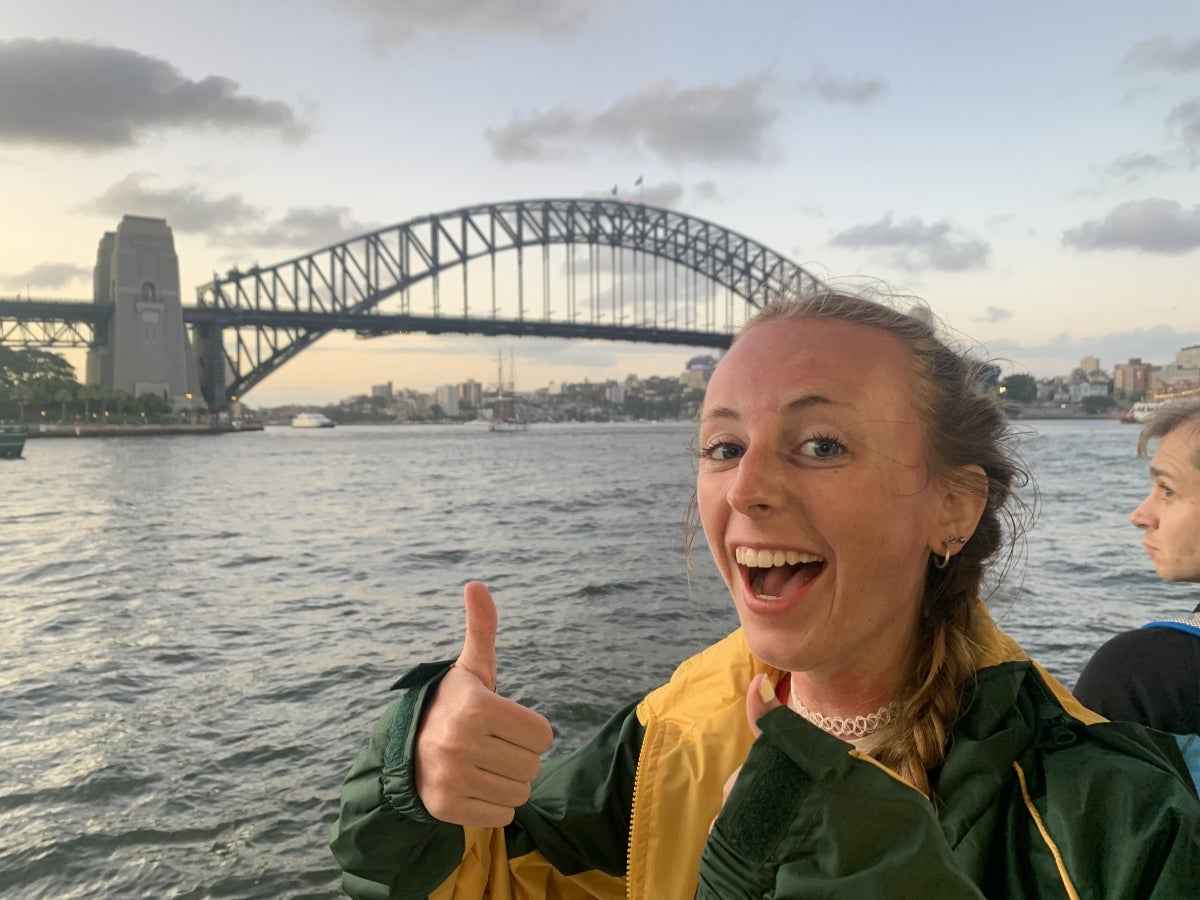
Charlotte Carver
Charlotte Carver is a junior studying communication and digital media. Though her time in Australia was cut short, she learned so much about a new place—and herself—through the experience.
Photos Courtesy of the writers
Flying Bat photo from www.centennialparklands.com.au
